#Bhairava Ashtami
Text
Kalashtami Kab Hai May 2024 | Bhakti Aanand
Kalashtami is celebrated every month on Krishna Paksha Ashtami. This festival is dedicated to Lord Shiva. It is believed that this is the most suitable day to please Lord Kaal Bhairav. On this day Hindu devotees worship Lord Bhairava and observe a fast to please him. In today's article, we are going to tell you when is Kalashtami in May 2024 and what will be its time and auspicious time, along with this you will know what is the importance of Kalashtami and what is the fasting method of this day.
0 notes
Text
Holidays 12.7
Holidays
Armed Forces Flag Day (India)
Blue Marble Day
Christmas Jumper Day (UK)
Cypress Tree Day (French Republic)
Dia de las Velitas (Day of the Little Candles; Colombia)
Enlightenment Day
Ferry Floss Day (UK)
Fetes de l’Escalade (Scaling or Climbing Day; Switzerland)
Hang a Wreath Day
Heavy Snow Day (Chinese Farmer’s Calendar)
Human Rights Day (Kiribati)
International Civil Aviation Day (UN)
Letter Writing Day
Memorial Day (East Timor)
National Day (Myanmar)
National FAFO Day
National Fire Safety Day
National Heroes’ Day (East Timor)
National Illinois Day
National Joy Day
National Judith Day
National Letter Writing Day
National Rina Day
National Slime Day
Pearl Harbor Remembrance Day
Spider-Woman Day
Spitak Remembrance Day (Armenia)
Students’ Day (Iran)
World Kamishibai Day
World TTTS Awareness Day
Food & Drink Celebrations
Marshmallow Peeps Day
National Cotton Candy Day [original date, moved to 6.11; also 7.31]
National Prosciutto Day
1st Thursday in December
Kid Lit Art Postcard Day [1st Thursday]
Lover's Fair (Arlon, Belgium) [1st Thursday]
Independence Days
Delaware Statehood Day (#1; 1787)
Farrar Republic (Declared; 2016) [unrecognized]
Fraughtia (Declared; 2012) [unrecognized]
Feast Days
Aemilianus (Greek Church)
Ambrose of Milan (Christian; Saint) [Italy]
Bhairava Ashtami (Indian Goddess of Soma) [8th Lunar Day of Kartik]
Bradley (Positivist; Saint)
Bruma II (Pagan)
Eve of the Immaculate Conception
Fara (Christian; Saint)
Feast of All Monsters (Church of the SubGenius)
Festival of Primordial Beings
Flag Day (India)
Flag Land Base Day (Scientology)
Gian Lorenzo Bernini (Artology)
Haloia of Demeter (Pagan)
Hanukkah (Judaism) [begins at sundown]
Holiday from Death Day (Pastafarian)
Maria Giuseppa Rossello (Christian; Saint)
Quema del Diablo (Burning of the Devil; Guatemala)
Rosita (Muppetism)
Sabinus of Spoleto (Christian; Saint)
Still Not Dead Day (Pastafarian)
Stuart Davis (Artology)
Lucky & Unlucky Days
Butsumetsu (仏滅 Japan) [Unlucky all day.]
Dismal Day (Unlucky or Evil Day; Medieval Europe; 23 of 24)
Egyptian Day (Unlucky Day; Middle Ages Europe) [23 of 24]
Fatal Day (Pagan) [23 of 24]
Historically Unlucky Day [11 of 11]
Historically Bad Day (Cicero assassinated, Pearl Harbor attack & 4 other tragedies) [11 of 11]
Umu Limnu (Evil Day; Babylonian Calendar; 56 of 60)
Very Unlucky Day (Grafton’s Manual of 1565) [56 of 60]
Premieres
Abbott Elementary (TV Series; 2012)
Anastasia: The Mystery of Anna (TV Mini-Series; 1986)
Bad Day at Flat Rocky or A Record in Bullwinkle’s Blot (Rocky & Bullwinkle Cartoon, S6, Ep. 326; 1964)
The Bells of St. Mary’s (Film; 1945)
Brokeback Mountain (Film; 2005)
Canine Patrol (Disney Cartoon; 1945)
Dominique, by The Singing Nun (Song; 1963)
Edward Scissorhands (Film; 1990)
Frosty the Snowman (Animated TV Special; 1969)
The Golden Compass (Film; 2007)
The Gondoliers, by Gilbert & Sullivan (Comic Opera; 1889)
The Grifters (Film; 1990)
Hallelujah, by Leonard Cohen (Song; 1984)
Homo Ludens: A Study of the Play Element in Culture, by Johan Huizinga (Science Book; 1938)
I’m Not There (Film; 2007)
Jamboree (Rock & Roll Film; 1957)
Kung Fu Fighting, by Carl Douglas (Song; 1974)
The Librarians (TV Series; 2014)
The Long Tomorrow, by Leigh Brackett (Novel; 1955)
Mary Queen of Scots (Film; 2018)
New Kin in Town, by The Eagles (Song; 1976)
Ocean’s Eleven (Film; 2001)
Resign Your Fate to a 52nd State or Moosylvania (Rocky & Bullwinkle Cartoon, S6, Ep. 325; 1964)
Rock! Rock! Rock! (Rock & Roll Film; 1956)
Rosemary, played live by the Gratefull Dead (Song; 1968) [Only Time It’s Played Live]
(Sittin’ On) The Dock of the Bay, recorded by Otis Redding (Song; 1967)
Star Trek: The Motion Picture (Film; 1979)
2010: The Year We Make Contact (Film; 1984)
Wild Life, by Paul McCartney & Wings (Album; 1971)
The World’s Fastest Indian (Film; 2005)
Today’s Name Days
Ambrosius, Benedikte (Austria)
Ambrozije, Sabina, Urban (Croatia)
Ambrož (Czech Republic)
Agathon (Denmark)
Piine, Sabiine (Estonia)
Sampsa (Finland)
Ambroise (France)
Ambros, Benedikte, Farah (Germany)
Amvrosios (Greece)
Ambrus (Hungary)
Ambrogio (Italy)
Anta, Antonija, Dzirkstīte, Tonija (Latvia)
Ambraziejus, Daugardas, Tautė (Lithuania)
Hallfrid, Hallstein (Norway)
Agaton, Ambroży, Marcin, Ninomysł (Poland)
Filofteia (Romania)
Ekaterina (Russia)
Ambróz (Slovakia)
Ambrosio (Spain)
Angela, Angelika (Sweden)
Ambrose (Ukraine)
Ambrose, Ambrosine, Jasmin, Jasmine, Jazlyn, Jazmin, Jazmine, Yasmeen, Yasmin, Yasmine, Yazmin (USA)
Today is Also…
Day of Year: Day 341 of 2024; 24 days remaining in the year
ISO: Day 4 of week 49 of 2023
Celtic Tree Calendar: Ruis (Elder) [Day 10 of 28]
Chinese: Month 10 (Gui-Hai), Day 25 (Ji-Hai)
Chinese Year of the: Rabbit 4721 (until February 10, 2024)
Hebrew: 24 Kislev 5784
Islamic: 24 Jumada I 1445
J Cal: 11 Zima; Foursday [11 of 30]
Julian: 24 November 2023
Moon: 27%: Waning Crescent
Positivist: 5 Bichat (12th Month) [Bradley]
Runic Half Month: Is (Stasis) [Day 12 of 15]
Season: Autumn (Day 75 of 89)
Zodiac: Sagittarius (Day 16 of 30)
1 note
·
View note
Text
Holidays 12.7
Holidays
Armed Forces Flag Day (India)
Blue Marble Day
Christmas Jumper Day (UK)
Cypress Tree Day (French Republic)
Dia de las Velitas (Day of the Little Candles; Colombia)
Enlightenment Day
Ferry Floss Day (UK)
Fetes de l’Escalade (Scaling or Climbing Day; Switzerland)
Hang a Wreath Day
Heavy Snow Day (Chinese Farmer’s Calendar)
Human Rights Day (Kiribati)
International Civil Aviation Day (UN)
Letter Writing Day
Memorial Day (East Timor)
National Day (Myanmar)
National FAFO Day
National Fire Safety Day
National Heroes’ Day (East Timor)
National Illinois Day
National Joy Day
National Judith Day
National Letter Writing Day
National Rina Day
National Slime Day
Pearl Harbor Remembrance Day
Spider-Woman Day
Spitak Remembrance Day (Armenia)
Students’ Day (Iran)
World Kamishibai Day
World TTTS Awareness Day
Food & Drink Celebrations
Marshmallow Peeps Day
National Cotton Candy Day [original date, moved to 6.11; also 7.31]
National Prosciutto Day
1st Thursday in December
Kid Lit Art Postcard Day [1st Thursday]
Lover's Fair (Arlon, Belgium) [1st Thursday]
Independence Days
Delaware Statehood Day (#1; 1787)
Farrar Republic (Declared; 2016) [unrecognized]
Fraughtia (Declared; 2012) [unrecognized]
Feast Days
Aemilianus (Greek Church)
Ambrose of Milan (Christian; Saint) [Italy]
Bhairava Ashtami (Indian Goddess of Soma) [8th Lunar Day of Kartik]
Bradley (Positivist; Saint)
Bruma II (Pagan)
Eve of the Immaculate Conception
Fara (Christian; Saint)
Feast of All Monsters (Church of the SubGenius)
Festival of Primordial Beings
Flag Day (India)
Flag Land Base Day (Scientology)
Gian Lorenzo Bernini (Artology)
Haloia of Demeter (Pagan)
Hanukkah (Judaism) [begins at sundown]
Holiday from Death Day (Pastafarian)
Maria Giuseppa Rossello (Christian; Saint)
Quema del Diablo (Burning of the Devil; Guatemala)
Rosita (Muppetism)
Sabinus of Spoleto (Christian; Saint)
Still Not Dead Day (Pastafarian)
Stuart Davis (Artology)
Lucky & Unlucky Days
Butsumetsu (仏滅 Japan) [Unlucky all day.]
Dismal Day (Unlucky or Evil Day; Medieval Europe; 23 of 24)
Egyptian Day (Unlucky Day; Middle Ages Europe) [23 of 24]
Fatal Day (Pagan) [23 of 24]
Historically Unlucky Day [11 of 11]
Historically Bad Day (Cicero assassinated, Pearl Harbor attack & 4 other tragedies) [11 of 11]
Umu Limnu (Evil Day; Babylonian Calendar; 56 of 60)
Very Unlucky Day (Grafton’s Manual of 1565) [56 of 60]
Premieres
Abbott Elementary (TV Series; 2012)
Anastasia: The Mystery of Anna (TV Mini-Series; 1986)
Bad Day at Flat Rocky or A Record in Bullwinkle’s Blot (Rocky & Bullwinkle Cartoon, S6, Ep. 326; 1964)
The Bells of St. Mary’s (Film; 1945)
Brokeback Mountain (Film; 2005)
Canine Patrol (Disney Cartoon; 1945)
Dominique, by The Singing Nun (Song; 1963)
Edward Scissorhands (Film; 1990)
Frosty the Snowman (Animated TV Special; 1969)
The Golden Compass (Film; 2007)
The Gondoliers, by Gilbert & Sullivan (Comic Opera; 1889)
The Grifters (Film; 1990)
Hallelujah, by Leonard Cohen (Song; 1984)
Homo Ludens: A Study of the Play Element in Culture, by Johan Huizinga (Science Book; 1938)
I’m Not There (Film; 2007)
Jamboree (Rock & Roll Film; 1957)
Kung Fu Fighting, by Carl Douglas (Song; 1974)
The Librarians (TV Series; 2014)
The Long Tomorrow, by Leigh Brackett (Novel; 1955)
Mary Queen of Scots (Film; 2018)
New Kin in Town, by The Eagles (Song; 1976)
Ocean’s Eleven (Film; 2001)
Resign Your Fate to a 52nd State or Moosylvania (Rocky & Bullwinkle Cartoon, S6, Ep. 325; 1964)
Rock! Rock! Rock! (Rock & Roll Film; 1956)
Rosemary, played live by the Gratefull Dead (Song; 1968) [Only Time It’s Played Live]
(Sittin’ On) The Dock of the Bay, recorded by Otis Redding (Song; 1967)
Star Trek: The Motion Picture (Film; 1979)
2010: The Year We Make Contact (Film; 1984)
Wild Life, by Paul McCartney & Wings (Album; 1971)
The World’s Fastest Indian (Film; 2005)
Today’s Name Days
Ambrosius, Benedikte (Austria)
Ambrozije, Sabina, Urban (Croatia)
Ambrož (Czech Republic)
Agathon (Denmark)
Piine, Sabiine (Estonia)
Sampsa (Finland)
Ambroise (France)
Ambros, Benedikte, Farah (Germany)
Amvrosios (Greece)
Ambrus (Hungary)
Ambrogio (Italy)
Anta, Antonija, Dzirkstīte, Tonija (Latvia)
Ambraziejus, Daugardas, Tautė (Lithuania)
Hallfrid, Hallstein (Norway)
Agaton, Ambroży, Marcin, Ninomysł (Poland)
Filofteia (Romania)
Ekaterina (Russia)
Ambróz (Slovakia)
Ambrosio (Spain)
Angela, Angelika (Sweden)
Ambrose (Ukraine)
Ambrose, Ambrosine, Jasmin, Jasmine, Jazlyn, Jazmin, Jazmine, Yasmeen, Yasmin, Yasmine, Yazmin (USA)
Today is Also…
Day of Year: Day 341 of 2024; 24 days remaining in the year
ISO: Day 4 of week 49 of 2023
Celtic Tree Calendar: Ruis (Elder) [Day 10 of 28]
Chinese: Month 10 (Gui-Hai), Day 25 (Ji-Hai)
Chinese Year of the: Rabbit 4721 (until February 10, 2024)
Hebrew: 24 Kislev 5784
Islamic: 24 Jumada I 1445
J Cal: 11 Zima; Foursday [11 of 30]
Julian: 24 November 2023
Moon: 27%: Waning Crescent
Positivist: 5 Bichat (12th Month) [Bradley]
Runic Half Month: Is (Stasis) [Day 12 of 15]
Season: Autumn (Day 75 of 89)
Zodiac: Sagittarius (Day 16 of 30)
0 notes
Video
youtube
இன்று தேய்பிறை அஷ்டமி - இந்த ராசிக்கார்கள் விளக்கு ஏற்றினா #tamilamutham #anmigam #தாடிகொம்பு #தேய்பிறைஅஷ்டமி2023 #theipiraiashtami #theipiraiashtamitime #theipiraiashtamitoday i #அஷ்டமி #தேய்பிறைஅஷ்டமி #இன்றுதேய்பிறைஅஷ்டமி #panamperuga #panamkidaika #selvamsera #selvamperuga #moneyattraction #moneymanifestation #பணம்சேர #பணவசியம் #பணம்பெருக #பணவரவு இன்று தேய்பிறை அஷ்டமி - இந்த ராசிக்கார்கள் விளக்கு ஏற்றினால் தீராத கடன் தீரும் | bhairava ashtami | Tamil AmuthamLINK---https://youtu.be/8Gu1Zd_mAeM ல் தீராத கடன்...
0 notes
Photo

National Maple Syrup Day #sanchitainfra #kalabhairava #mahadev #shiva #love #lordshiva #hinduism #hindu #nithyananda #spiritual #lord #follow #namaste #ashtami #durgapuja #navratri #durga #photography #goodvibes #om #radhaashtami #shanidham #asola #bhaktisarovar #shivalingam #omnamahshivaya #ramcharan #bhakti #telugumemes #bhairava (at Sanchita Infrastructure Private Limited) https://www.instagram.com/p/CmPj6n7BPFy/?igshid=NGJjMDIxMWI=
#sanchitainfra#kalabhairava#mahadev#shiva#love#lordshiva#hinduism#hindu#nithyananda#spiritual#lord#follow#namaste#ashtami#durgapuja#navratri#durga#photography#goodvibes#om#radhaashtami#shanidham#asola#bhaktisarovar#shivalingam#omnamahshivaya#ramcharan#bhakti#telugumemes#bhairava
1 note
·
View note
Text
The Kala Bhairava Homam & It’s All out Benefits
Kala Bhairava Homam is an auspicious right to appease Lord Kala Bhairava, one of the fiercest manifestations of Lord Shiva, associated with destruction. There are Astanga Bhairavas who control 8 directions of the apparent world. Kala Bhairava is the supreme one and the ruler of the universal time.
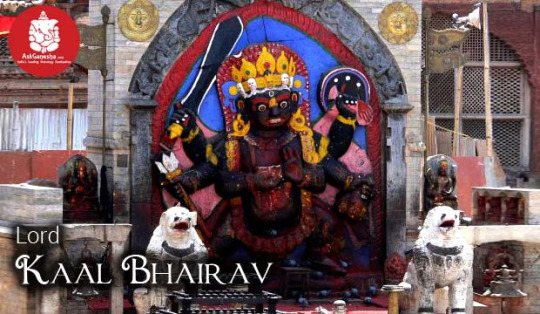
Benefits of Homam and Mantra
In the scriptures there are detailed descriptions of Kala Bhairava Homam or fire offerings to the Lord. According to Hindu scriptures, Homam is the most auspicious spiritual way on earth to get connected with the divine beings. Kal Bhairava Homam is a great remedial service to receive the blessings of Kala Bhairava.
The Meaning of the name Kala Bhairava
The name ‘Kala Bhairava’ is derived from Veeru meaning Ferocious. Bhairava means the The Supreme Power who dispels fears and saves His devotees from greed, lust, foes and rage. These are all enemies of humankind as they all put hurdles before the mundane people who aspire for the blessings of God. There is also another meaning Bha or Va means ‘creation’, ‘Ra’ means nurturing and again ‘Va’ or ‘Bha’ means Destruction or total annihilation. So Bhairava is that deity who creates 3 stages of life- creation, nurturing and destruction.
What is Homam?
Homam is a fire ritual. Another name of it is homa or havan or yagya or yajana. In homam, the divine presence of the Supreme Lord is invoked following specific procedures. Various materials are sacrificed into fire, along with sacred chanting of mantras. It is believed that the sacrifices reach the specific gods invoked.
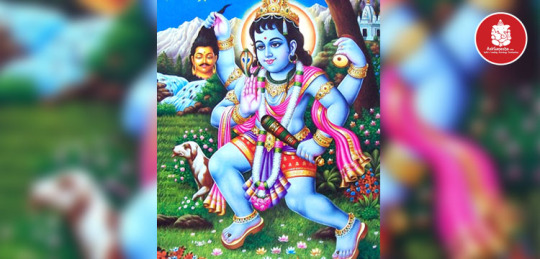
Why Kala Bhairava Homam
Kala Bhairava has the power to tame universal time. He dissolves all delusions, anxieties, fears and negativities of mind. Lord Kala Bhairava makes one fearless. He increases total detachment and offers liberation.
Kala Bhairava Homam is very auspicious and expedites spiritual progress and liberation. According to scriptures, Lord Kala Bhairava comes into fire and receives the prayers of the spiritual aspirants. The Lord is being worshipped through internal fire of the spiritual aspirant and accepts the mantras via that fire of Homam. It is regarded that the internal fire is weaker than the external fire hence it is beneficial to worship the Lord Kal Bhairava burning an external fire. The practice strengthens the internal fire of the aspirant too.
Description of Kala Bhairava Homam
Kala Bhairava Homam is performed by well versed priests. Appropriate mantras and hymns are recited to energize the ritual and increase its efficacy. Ashtami is considered auspicious tithi to perform this Homam. Performing a Kala Bhairava Homam can help one overcome various obstacles that block the success and accomplish expected goals efficiently.
The ritual is performed based on the birth star of the aspirant.
Benefits of Kala Bhairava Homam
As per scriptures, performing of Kala Bhairava Homam can offer the blessings of the Lord in such ways:
Enhancing time management skills
Safeguarding against odd events
Infusion of positive energy
Paving the way to success
Improving financial status
Overcoming debts
Getting rid of negative karmas
1 note
·
View note
Text
What is Significance of Kaal Bhairav Jayanti?
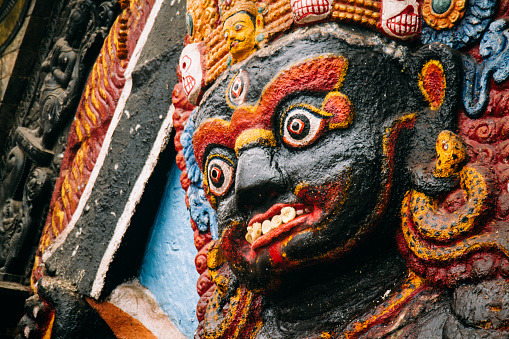
Bhairava Ashtami, also known as Bhairavashtami, Bhairava Jayanti, Kala-Bhairava Ashtami, and Kala-Bhairava Jayanti, is a Hindu festival honouring the birth of the ferocious and angry form of the god Shiva known as Bhairava. "Bhairava means "terrifying" in Sanskrit". It occurs on the eighth lunar day (ashtami) of the Hindu month of Kartik or Margashirsha. As all of the Ashtamis in Krishna Paksha are holy days of Bhairava, who is also known as Dandapani (as he holds a rod or Danda to punish sinners) and who rides a dog, he is also known as Swaswa, which means "whose horse is a dog," the name Kalashtami is occasionally used to refer to this particular Ashtami.
Bhairava represents the anger of Shiva. The narrative related on the occasion states that the Trimurti gods, Brahma, Vishnu, and Shiva, were debating who was the superior of them all in a serious manner. Brahma's comments during the heated discussion angered Shiva, who gave the order to his ganor Bhairava to remove one of Brahma's five heads. Bhairava executed Shiva's commands, causing Brahma to have four heads after losing one of his heads. All the others prayed to Shiva and Bhairava, trembling in fear.
Another somewhat altered version states that after Brahma insulted Shiva, Bhairava (Kala-Bhairava) materialised from the enraged god's forehead, cut Brahma's head, and left him with only four heads. Because of the sin of killing Brahma, the most knowledgeable Brahmin—Brahmahatya or Brahminicide—his head was affixed to Bhairava's left palm. Bhairava had to carry out the vow of a Kapali, traversing the world as a Bhikshatana with the skull of the dead as his begging bowl, to atone for the sin of brahmahatya. When Bhairava arrives in Varanasi, a sacred city where a shrine is still devoted to him, his guilt is finally repented for.
1 note
·
View note
Text


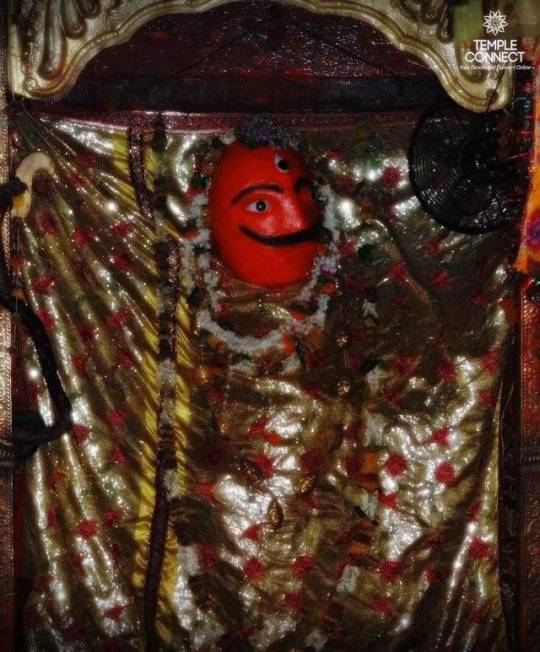

Have an auspicious Kalashtami!
Kalashtami, is observed every month during Ashtami Tithi of Krishna Paksha. Devotees of Lord Bhairav keep fast and worship Him on all Kalashtami days in the year.
ॐ भैरवाय नम: ll
आज, २६ अप्रैल २०१९ को कालाष्टमी का पर्व मनाया जा रहा है | आज के दिन भगवान काल भैरव की आराधना करी जाती है |
ॐ कालाकालाया विधमहे,
कालाअथीथाया धीमहि,
तन्नो काल भैरवा प्रचोदयात॥
Kaal Bhairav has 8 different forms, each of which represent different elements.
⛳ The Eight Forms of Bhairava :
👉 Sri Asitanga Bhairava
👉 Sri Ruru Bhairava
👉 Sri Chanda Bhairava
👉 Sri Krodha Bhairava or Batuk Bhairava
👉 Sri Unmattha Bhairava
👉 Sri Kapala Bhairava or Laat Bhairava
👉 Sri Bheeshana Bhairava or Bhoot Bhairava
👉 Sri Samhara Bhairava
Chanting of Kalabhairav Ashtakam
Visiting Bhairav Temples
Performing puja to the Kalabhairav
Offering food to a black dog
...are all part of the observances on this day.
8 notes
·
View notes
Text
Kal Bhairav: The Fierce and Benevolent Manifestation of Lord Shiva
We hope you enjoyed this article about Kal Bhairav. Please share your feedback, questions, or comments below. We would love to hear from you.
Shri Kal bhairav is one of the most revered and mysterious deities in Hinduism. He is the fierce manifestation of Lord Shiva, the supreme god of destruction, transformation, and liberation. He is also known as the lord of time, the guardian of the directions, and the protector of the devotees. He is worshipped on the auspicious day of Bhairava Ashtami, which falls on the eighth day of the dark…

View On WordPress
#Bhairava Ashtami#hinduism#Kal Bhairav#Kalabhairava Ashtakam#Kalabhairava Ashtottara Shatanamavali#Kalabhairava Homam#Kalabhairava Prasad#Kalabhairava Puja#Kalabhairava Sahasranama#lord shiva
0 notes
Photo

#hindu #god #ashtami #bhairava #bhairavar #mantra #tamil #homamandpoojaservice https://www.instagram.com/p/CcrHX0RPa3e/?igshid=NGJjMDIxMWI=
0 notes
Text
Holidays 12.7
Holidays
Armed Forces Flag Day (India)
Dia de las Velitas (Day of the Little Candles; Colombia)
Enlightenment Day
Ferry Floss Day (UK)
Fetes de l’Escalade (Scaling or Climbing Day; Switzerland)
Hang a Wreath Day
Heavy Snow Day (Chinese Farmer’s Calendar)
Human Rights Day (Kiribati)
International Civil Aviation Day (UN)
Letter Writing Day
Memorial Day (East Timor)
National Fire Safety Council Day
National Heroes’ Day (East Timor)
National Illinois Day
Pearl Harbor Remembrance Day
Spitak Remembrance Day (Armenia)
Students’ Day (Iran)
Food & Drink Celebrations
National Cotton Candy Day [original date, moved to 6.11; also 7.31]
1st Wednesday in December
Special Kids Day [1st Wednesday]
Independence Days
Delaware Statehood Day (#1; 1787)
Feast Days
Aemilianus (Greek Church)
Ambrose of Milan (Christian; Saint)
Bhairava Ashtami (Indian Goddess of Soma) [8th Lunar Day of Kartik]
Bradley (Positivist; Saint)
Eve of the Immaculate Conception
Fara (Christian; Saint)
Feast of All Monsters (Church of the SubGenius)
Festival of Primordial Beings
Flag Land Base Day (Scientology)
Full Moon [12th of the Year] (a.k.a. ...
Bitter Moon (China)
Christmas Moon (Colonial)
Cold Moon (Amer. Indian, Celtic, North America, Traditional)
Fruit Moon (South Africa)
Hoar Frost Moon (Traditional)
Long Night’s Moon (Alternate, Amer. Indian, Neo-Pagan)
Moon of the Popping Trees (Traditional)
Oak Moon (England, Wicca)
Peach Moon (Choctaw)
Snow Moon (Cherokee)
Southern Hemisphere: Honey, Rose, Strawberry
Unduwap Full Moon Poya Day (Sri Lanka)
Winter Maker Moon (Traditional)
Holiday from Death Day (Pastafarian)
Maria Giuseppa Rossello (Christian; Saint)
Quema del Diablo (Burning of the Devil; Guatemala)
Rosita (Muppetism)
Sabinus of Spoleto (Christian; Saint)
Still Not Dead Day (Pastafarian)
Lucky & Unlucky Days
Dismal Day (Unlucky or Evil Day; Medieval Europe; 23 of 24)
Egyptian Day (Unlucky Day; Middle Ages Europe) [23 of 24]
Fatal Day (Pagan) [23 of 24]
Historically Unlucky Day [11 of 11]
Shakku (赤口 Japan) [Bad luck all day, except at noon.]
Umu Limnu (Evil Day; Babylonian Calendar; 56 of 60)
Very Unlucky Day (Grafton’s Manual of 1565) [56 of 60]
Premieres
Anastasia: The Mystery of Anna (TV Mini-Series; 1986)
Dominique, by The Singing Nun (Song; 1963)
Edward Scissorhands (Film; 1990)
Fosty the Snowman (Animated TV Special; 1969)
The Golden Compass (Film; 2007)
The Gondoliers, by Gilbert & Sullivan (Comic Opera; 1889)
Hallelujah, by Leonard Cohen (Song; 1984)
I’m Not There (Film; 2007)
Jamboree (Rock & Roll Film; 1957)
Kung Fu Fighting, by Carl Douglas (Song; 1974)
The Librarians (TV Series; 2014)
New Kin in Town, by The Eagles (Song; 1976)
Ocean’s Eleven (Film; 2001)
Rock! Rock! Rock! (Rock & Roll Film; 1956)
Rosemary, played live by the Gratefull Dead (Song; 1968) [Only Time It’s Played Live]
(Sittin’ On) The Dock of the Bay, recorded by Otis Redding (Song; 1967)
Star Trek: The Motion Picture (Film; 1979)
Wild Life, by Paul McCartney & Wings (Album; 1971)
Today’s Name Days
Ambrosius, Benedikte (Austria)
Ambrozije, Sabina, Urban (Croatia)
Ambrož (Czech Republic)
Agathon (Denmark)
Piine, Sabiine (Estonia)
Sampsa (Finland)
Ambroise (France)
Ambros, Benedikte, Farah (Germany)
Amvrosios (Greece)
Ambrus (Hungary)
Ambrogio (Italy)
Anta, Antonija, Dzirkstīte, Tonija (Latvia)
Ambraziejus, Daugardas, Tautė (Lithuania)
Hallfrid, Hallstein (Norway)
Agaton, Ambroży, Marcin, Ninomysł (Poland)
Ekaterina (Russia)
Ambróz (Slovakia)
Ambrosio (Spain)
Angela, Angelika (Sweden)
Ambrose (Ukraine)
Ambrose, Ambrosine, Jasmin, Jasmine, Jazlyn, Jazmin, Jazmine, Yasmeen, Yasmin, Yasmine, Yazmin (USA)
Today is Also…
Day of Year: Day 341 of 2022; 24 days remaining in the year
ISO: Day 3 of week 49 of 2022
Celtic Tree Calendar: Ruis (Elder) [Day 12 of 28]
Chinese: Month 11 (Dōngyuè), Day 14 (Jia-Wu)
Chinese Year of the: Tiger (until January 22, 2023)
Hebrew: 13 Kislev 5783
Islamic: 13 Jumada I 1444
J Cal: 11 Zima; Threesday [11 of 30]
Julian: 24 November 2022
Moon: 100%: Full Moon
Positivist: 5 Bichat (12th Month) [Bradley]
Runic Half Month: Is (Stasis) [Day 13 of 15]
Season: Autumn (Day 76 of 90)
Zodiac: Sagittarius (Day 15 of 30)
0 notes
Text
Holidays 12.7
Holidays
Armed Forces Flag Day (India)
Dia de las Velitas (Day of the Little Candles; Colombia)
Enlightenment Day
Ferry Floss Day (UK)
Fetes de l’Escalade (Scaling or Climbing Day; Switzerland)
Hang a Wreath Day
Heavy Snow Day (Chinese Farmer’s Calendar)
Human Rights Day (Kiribati)
International Civil Aviation Day (UN)
Letter Writing Day
Memorial Day (East Timor)
National Fire Safety Council Day
National Heroes’ Day (East Timor)
National Illinois Day
Pearl Harbor Remembrance Day
Spitak Remembrance Day (Armenia)
Students’ Day (Iran)
Food & Drink Celebrations
National Cotton Candy Day [original date, moved to 6.11; also 7.31]
1st Wednesday in December
Special Kids Day [1st Wednesday]
Independence Days
Delaware Statehood Day (#1; 1787)
Feast Days
Aemilianus (Greek Church)
Ambrose of Milan (Christian; Saint)
Bhairava Ashtami (Indian Goddess of Soma) [8th Lunar Day of Kartik]
Bradley (Positivist; Saint)
Eve of the Immaculate Conception
Fara (Christian; Saint)
Feast of All Monsters (Church of the SubGenius)
Festival of Primordial Beings
Flag Land Base Day (Scientology)
Full Moon [12th of the Year] (a.k.a. ...
Bitter Moon (China)
Christmas Moon (Colonial)
Cold Moon (Amer. Indian, Celtic, North America, Traditional)
Fruit Moon (South Africa)
Hoar Frost Moon (Traditional)
Long Night’s Moon (Alternate, Amer. Indian, Neo-Pagan)
Moon of the Popping Trees (Traditional)
Oak Moon (England, Wicca)
Peach Moon (Choctaw)
Snow Moon (Cherokee)
Southern Hemisphere: Honey, Rose, Strawberry
Unduwap Full Moon Poya Day (Sri Lanka)
Winter Maker Moon (Traditional)
Holiday from Death Day (Pastafarian)
Maria Giuseppa Rossello (Christian; Saint)
Quema del Diablo (Burning of the Devil; Guatemala)
Rosita (Muppetism)
Sabinus of Spoleto (Christian; Saint)
Still Not Dead Day (Pastafarian)
Lucky & Unlucky Days
Dismal Day (Unlucky or Evil Day; Medieval Europe; 23 of 24)
Egyptian Day (Unlucky Day; Middle Ages Europe) [23 of 24]
Fatal Day (Pagan) [23 of 24]
Historically Unlucky Day [11 of 11]
Shakku (赤口 Japan) [Bad luck all day, except at noon.]
Umu Limnu (Evil Day; Babylonian Calendar; 56 of 60)
Very Unlucky Day (Grafton’s Manual of 1565) [56 of 60]
Premieres
Anastasia: The Mystery of Anna (TV Mini-Series; 1986)
Dominique, by The Singing Nun (Song; 1963)
Edward Scissorhands (Film; 1990)
Fosty the Snowman (Animated TV Special; 1969)
The Golden Compass (Film; 2007)
The Gondoliers, by Gilbert & Sullivan (Comic Opera; 1889)
Hallelujah, by Leonard Cohen (Song; 1984)
I’m Not There (Film; 2007)
Jamboree (Rock & Roll Film; 1957)
Kung Fu Fighting, by Carl Douglas (Song; 1974)
The Librarians (TV Series; 2014)
New Kin in Town, by The Eagles (Song; 1976)
Ocean’s Eleven (Film; 2001)
Rock! Rock! Rock! (Rock & Roll Film; 1956)
Rosemary, played live by the Gratefull Dead (Song; 1968) [Only Time It’s Played Live]
(Sittin’ On) The Dock of the Bay, recorded by Otis Redding (Song; 1967)
Star Trek: The Motion Picture (Film; 1979)
Wild Life, by Paul McCartney & Wings (Album; 1971)
Today’s Name Days
Ambrosius, Benedikte (Austria)
Ambrozije, Sabina, Urban (Croatia)
Ambrož (Czech Republic)
Agathon (Denmark)
Piine, Sabiine (Estonia)
Sampsa (Finland)
Ambroise (France)
Ambros, Benedikte, Farah (Germany)
Amvrosios (Greece)
Ambrus (Hungary)
Ambrogio (Italy)
Anta, Antonija, Dzirkstīte, Tonija (Latvia)
Ambraziejus, Daugardas, Tautė (Lithuania)
Hallfrid, Hallstein (Norway)
Agaton, Ambroży, Marcin, Ninomysł (Poland)
Ekaterina (Russia)
Ambróz (Slovakia)
Ambrosio (Spain)
Angela, Angelika (Sweden)
Ambrose (Ukraine)
Ambrose, Ambrosine, Jasmin, Jasmine, Jazlyn, Jazmin, Jazmine, Yasmeen, Yasmin, Yasmine, Yazmin (USA)
Today is Also…
Day of Year: Day 341 of 2022; 24 days remaining in the year
ISO: Day 3 of week 49 of 2022
Celtic Tree Calendar: Ruis (Elder) [Day 12 of 28]
Chinese: Month 11 (Dōngyuè), Day 14 (Jia-Wu)
Chinese Year of the: Tiger (until January 22, 2023)
Hebrew: 13 Kislev 5783
Islamic: 13 Jumada I 1444
J Cal: 11 Zima; Threesday [11 of 30]
Julian: 24 November 2022
Moon: 100%: Full Moon
Positivist: 5 Bichat (12th Month) [Bradley]
Runic Half Month: Is (Stasis) [Day 13 of 15]
Season: Autumn (Day 76 of 90)
Zodiac: Sagittarius (Day 15 of 30)
0 notes
Text



Bhairava (Mahakala Bhairava) (Sanskrit: भैरव, lit. frightful) is a Hindu Tantrik deity worshiped by Hindus. In Shaivism, he is a fierce manifestation of Shiva associated with annihilation.[1][2][3][4] In Trika system Bhairava represents Supreme Reality, synonymous to Para Brahman.[5][6] In Hinduism Bhairava is also called Dandapani (as he holds a rod or Danda to punish sinners) and Swaswa meaning "whose horse is a dog".[7] In Vajrayana Buddhism, he is considered a fierce emanation of Mañjuśrī and also called Heruka, Vajrabhairava and Yamantaka.
Mantra
Om Shri Kaal Bhairavaya Namaha
Weapon
Trishula, Khaṭvāṅga
Number
33
This article contains Indic text. Without proper rendering support, you may see question marks or boxes, misplaced vowels or missing conjuncts instead of Indic text.
The historical origins of Bhairava are obscure; according to Ronald M. Davidson, he was probably a "local ferocious divinity" associated by tribal peoples with cremation grounds (smasana), ghouls and ghosts (vetala, pisaca).[10] He is worshiped throughout India, Sri Lanka and Nepal as well as in Tibetan Buddhism.
In Hinduism
Bhairava with his consort, Bhairavi
Aakash Bhairab in Kathmandu.
Bhairava originates from the word bhīru, which means "fearful". Bhairava means "terribly fearful form". It is also known as one who destroys fear or one who is beyond fear. The right interpretation is that he protects his devotees from dreadful enemies, greed, lust and anger. Bhairava protects his devotees from these enemies. These enemies are dangerous as they never allow humans to seek God within. There is also another interpretation: Bha means creation, ra means sustenance and va means destruction. Therefore, Bhairava is the one who creates, sustains and dissolves the three stages of life. Therefore, he becomes the ultimate or the supreme.
The origin of Bhairava can be traced to a conversation between Brahma and Vishnu which is recounted in the Shiva Mahapuranam. In it, Vishnu inquired of Brahma, "Who is the supreme creator of the Universe?" Arrogantly, Brahma told Vishnu to worship him as Supreme Creator. One day, Brahma thought "I have five heads. Shiva also has five heads. I can do everything that Shiva does and therefore I am Shiva." Brahma became a little egotistical as a result of this. Additionally, he began to forge the work of Shiva and also started interfering in what Shiva was supposed to be doing. Consequently, Mahadeva (Shiva) threw a small nail from his finger which assumed the form of Kala Bhairava and casually went to cut off one of Brahma's heads. The skull (Kapala) of Brahma is held in the hands of Kala Bhairava, Brahma’s ego was destroyed and he became enlightened. From then on, he became useful to himself and to the world, and deeply grateful to Shiva. In the form of the Kala Bhairava, Shiva is said to be guarding each of these Shaktipeeth (Shakti temples). Each Shaktipeeth is accompanied by a temple dedicated to Bhairava.
There is another school of thought which says that Shiva himself created Bhairava. There was one demon by name Dahurāsuraṇ who got a boon that he could be killed only by a woman. Kali was invoked by Parvati to kill him. The wrath of Kali killed the demon. After killing the demon, her wrath metamorphosed as a child. Kali fed the child with her milk. Shiva made both Kali and the child to merge with him. From this merged form of Shiva, Bhairava appeared in his eight forms (Aṣṭāṅga Bhairavas). Since Bhairava was thus created by Shiva, he is said to be one of the sons of Shiva.
Puranas too give different versions of Bhairava. In this version there was a war between gods and demons. To eradicate the demons, Shiva created Kala Bhairava from whom Aṣṭāṅga Bhairavas were created. These Ashta Bhairavas got married to Ashta Matrikas. These Ashta Bhairavas and Ashta Matrikas have dreadful forms. From these Ashta Bhairavas and Ashta Matrikas, 64 Bhairavas and 64 Yoginis were created.
Normally in Shiva temples, idols of Bhairava are situated in the north facing, southern facing direction. He is also called Kṣhetrapāla. He appears in a standing position with four hands. His weapons are drum, pāśa (noose), trident and skull. In some forms of Bhairava, there are more than four hands. He appears without dress and with a dog. His weapons, the dog, protruding teeth, terrifying looks, a garland with red flowers all give him a frightening appearance.
In all Shiva temples, regular puja rituals begin with Surya and end with Bhairava. Bhairava likes ghee bath (abhiṣeka), red flowers, ghee lamp, unbroken coconut, honey, boiled food, fibrous fruits etc. If a Bhairava idol is facing west, it is good; facing south is moderate; facing east is not good. The right time to pray to Bhairavi is midnight. During midnight it is said that Bhairava and his consort Bhairavi will give darśana (appearance) to their devotees. The most appropriate time is a Friday midnight. There are eight types of flowers and leaves used in archana (अर्चन) to Bhairava.
Bhairava is the ultimate form of manifestation or pure "I" consciousness. This form is called Svarṇākarṣṇa Bhairava. He has red or blue complexion and is clothed in golden dress. He has the moon over his head. He has four hands, one of which he holds a golden vessel. He gives wealth and prosperity. Performing pūja on Tuesdays gives quick results. In some of the ancient texts he is said to have thirty two hands, the shape of a bird, golden complexion, terrible teeth, and a human form above the hip. Worshiping him destroys enemies.
Some forms of Bhairava are guardians of the eight cardinal points. There are 64 Bhairavas. These 64 Bhairavas are grouped under 8 categories and each category is headed by one major Bhairava. The major eight Bhairavas are called Aṣṭāṅga Bhairavas. The Ashta Bhairavas control the 8 directions of this universe. Each Bhairava has seven sub Bhairavas under him, totaling 64 Bhairavas. All of the Bhairavas are ruled and controlled by Maha Swarna Kala Bhairava otherwise known as Kala Bhairava, who is the supreme ruler of time of this universe as per some Śaiva tantric scriptures (āgamas). Bhairavi is the consort of Kala Bhairava.[24] The eight Bhairavas are said to represent five elements viz. ākāś, air, fire, water and earth and the other three being sun, moon and ātman. Each of the eight Bhairavas are different in appearance, have different weapons, different vāhanas (vehicles) and they bless their devotees with eight types of wealth representing Ashta Lakshmis. Continuous worship of Bhairava leads the worshiper to a true Guru. There are separate mantras to all the eight Bhairavas.
Bhairava is also called upon as protector, as he guards the eight directions of the universe. In Shiva temples, when the temple is closed, the keys are placed before Bhairava. Bhairava is also described as the protector of women. He is described as the protector of the timid and in general women who are timid in nature.
It is generally believed that worshiping Bhairava gives prosperity, success and good progeny, prevents premature death and solution to debts and liabilities. Different forms of Bhairava evolve only from Śiva, who is called the Mahā Bhairava.
Trika System
Trika and Kashmiri Shaivism names the Absolute Reality(Para Brahman) as Bhairava. The Vijñāna Bhairava Tantra is a key Tantra text of the Trika System. Cast as a discourse between the god Bhairava and his consort Bhairavi it briefly presents 112 Tantric meditation methods or centering techniques (Dharana). The text is a chapter from the Rudrayamala Tantra,a Bhairava Agama. Bhairavi, the goddess, asks Bhairava to reveal the essence of the way to realization of the highest reality. In his answer Bhairava describes 112 ways to enter into the universal and transcendental state of consciousness. References to it appear throughout the literature of Trika, Kashmir Shaivism, indicating that it was considered to be an important text in the schools of Kashmir Shaiva philosophy and Trika.
In Buddhism
Thangka Depicting Vajrabhairava, ca. 1740s.
Buddhism also adopted Bhairava (Tibetan: 'Jigs byed; Chinese: Buwei) as a deity and a dharmapala or dharma protector. The various buddhist forms of Bhairava (variously called Herukas, Vajrabhairava, Mahākāla and Yamantaka) are considered fierce deities and yidams (tantric meditational deity) in Tibetan Buddhism. They also have their own set of buddhist tantras, the Vajrabhairava tantras.[34] According to Tibetan tradition, these tantras were revealed to Lalitavajra in Oddiyana in the 10th century. These texts play a particularly important role in the Sarma (new translation) traditions of Tibetan Buddhism, especially among the Gelug school where Vajrabhairava is one of the three central highest yoga tantra practices of the lineage. Because of this, it is also popular in Mongolia as a protector deity and was also popular among the Manchus. The deity is also central to Newar Buddhism. The tantric practices associated with Bhairava focus on the transformation of anger and hatred into understanding.
Worship
See also: Bhairava Ashtami
Kala Bhairava attended by devotees at Kathmandu Durbar Square
Temples or shrines to Bhairava are present within or near most Jyotirlinga temples. There are also the sacred twelve shrines dedicated to Shiva which can be found all across India including the Kashi Vishwanath Temple, Varanasi and the Kal Bhairav temple, Ujjain. The Patal Bhairav and Vikrant Bhairav shrines are located in Ujjain as well.
One of the ancient temples of Kaal Bhairava is situated in Dhuri city (District Sangrur), Punjab. The idol of Kaal Bhairava in the temple was found hundreds of years ago. The temple has been managed by "Baba Shri Pritam Muni Ji" for many years. It is believed that Kaal Bhairava Ji resides here.
Gorat Kashmiris are known to worship Bhairava during Shivratri. The renowned Hindu reformer, Adi Sankara composed a hymn on Kala Bhairava called "Sri Kalabhairava Ashtakam" in the city of Kashi.
Observances
Bhairava Ashtami commemorating the day Kala Bhairava appeared on earth, is celebrated on Krishna paksha Ashtami of the Margashirsha month of the Hindu calendar. It is a day filled with special prayers and rituals.
Iconography
Rakta Bhairava
Bhairava is depicted as being ornamented with a range of twisted serpents, which serve as earrings, bracelets, anklets, and sacred thread (yajnopavita). He wears a tiger skin and a ritual apron composed of human bones.[44] Bhairava has a dog (Shvan) as his divine vahana (vehicle). Bhairavi is a fierce and terrifying aspect of the Devi who is virtually indistinguishable from Kali, with the exception of her particular identification as the consort of Bhairava.
Bhairava himself has eight manifestations i.e. Ashta Bhairava:
Asithaanga Bhairava
Ruru Bhairava
Chanda Bhairava
Krodha Bhairava
Unmattha Bhairava
Kapaala Bhairava
Bheeshana Bhairava
Samhaara Bhairava
Kala Bhairava is conceptualized as the Guru of the planetary deity, Shani (Saturn). Bhairava is known as Bhairavar or Vairavar in Tamil, where he is often presented as a Grama devata or village guardian who safeguards the devotee in eight directions (ettu tikku). Known in Sinhalese as Bahirawa, he is said to protect treasures. Lord Bhairava is the main deity worshiped by the Aghora sect.
List of Bhairava temples
Reflection of blue sky on mask of Shwet Bhairav at Basantapur, Kathmandu, Nepal
Bhairava is an important deity of the Newars. All the traditional settlements of Newars have at least one temple of Bhairava. Most of the temples of Bhairava in Nepal are maintained by Newar priests. There are several Bhairava temples in the Kathmandu valley. In south Karnataka, Lord Sri Kalabhairaveshwara is present as Kshetra Palaka in Sri Adichunchanagiri Hills.
Haatha: Shwet Bhairav
Kala Bhairava temples can also be found around Shaktipeeths. It is said that Shiva allocated the job of guarding each of the 52 Shaktipeeths to one Bhairava. There are said to be 52 forms of Bhairava, which are considered a manifestation of Shiva himself. Traditionally, Kala Bhairava is the Grama devata in the rural villages of Maharashtra, where he is referred to as "Bhairava/Bhairavnath" and "Bairavar". In Karnataka, Lord Bhairava is the supreme God for the community commonly referred to as Vokkaligas (Gowdas). Especially in the Jogi Vokkaliga, he is considered the caretaker and punisher.[49] Shri Kala Bhairava Nath Swami Temple of Madhya Pradesh is also popular.
32 notes
·
View notes
Photo

Happy Kaashtami #sanchitainfra #kalabhairava #mahadev #shiva #love #lordshiva #hinduism #hindu #nithyananda #spiritual #lord #follow #namaste #ashtami #durgapuja #navratri #durga #photography #goodvibes #om #radhaashtami #shanidham #asola #bhaktisarovar #shivalingam #omnamahshivaya #ramcharan #bhakti #telugumemes #bhairava (at Sanchita Infrastructure Private Limited) https://www.instagram.com/p/CmM_g2WBEum/?igshid=NGJjMDIxMWI=
#sanchitainfra#kalabhairava#mahadev#shiva#love#lordshiva#hinduism#hindu#nithyananda#spiritual#lord#follow#namaste#ashtami#durgapuja#navratri#durga#photography#goodvibes#om#radhaashtami#shanidham#asola#bhaktisarovar#shivalingam#omnamahshivaya#ramcharan#bhakti#telugumemes#bhairava
0 notes
Link
0 notes
Text
Gruhlaxmi Ambabai Famous Mata Temple In Nagpur
The body is your temple. Keep it pure and clean for the soul to reside in. This is one of the quotes by B.K.S.Iyengar. The quote can be defined as one’s body is like a temple. Heart and mind should be kept pure and clean without any negativity so that your soul can stay in it and reside there. One of the famous Mata temple in Nagpur, Maharashtra is Gruhlaxmi Ambabai Temple. Nagpur is known as the city of oranges. With the same, it has gained popularity among the tourists for the around places also. Whether it is a nature walk or a visit to the temple one finds peace and positivity around. Nagpur has been continuous on the developing side, being a facility for the hospitals or the transportation and thus lead to the good spot for tourists. And with this, there is also an increase in the flow of devotees to visit various temples in and around Nagpur city.
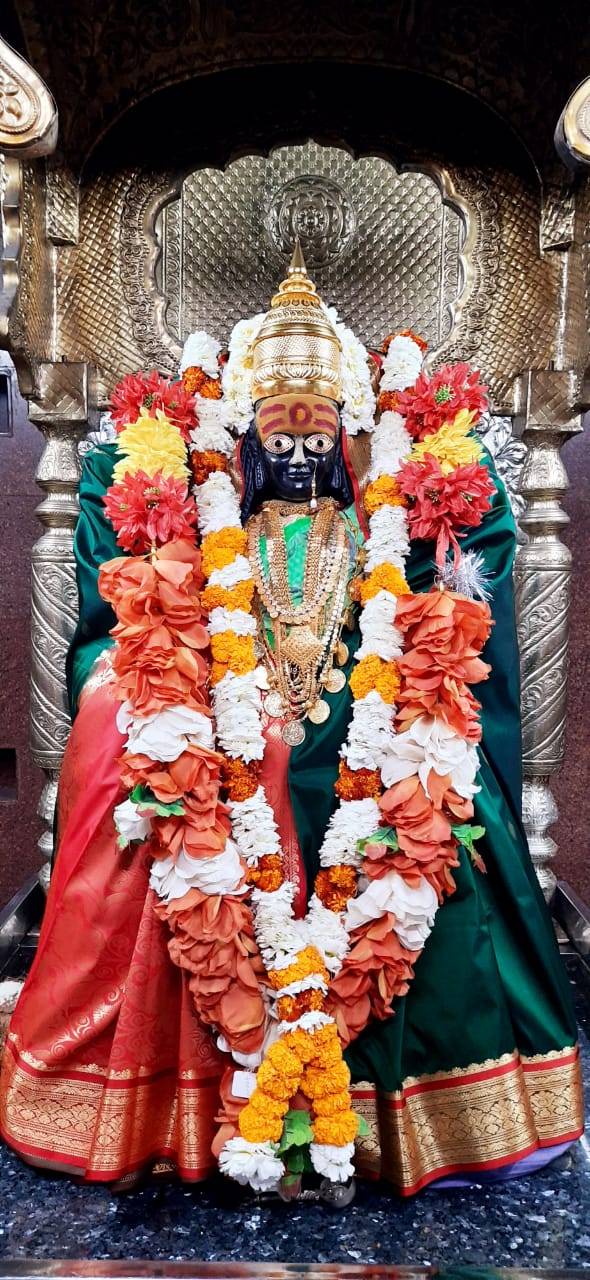
One of the beautiful temples in Nagpur is Gruhlaxmi Ambabai Temple, which is situated in the vicinity of Seminary Hills. The temple is surrounded by greens which gives positive vibes and also one can witness natural beauty too. This is one famous devi temple in Nagpur. This temple has an ancient and enriched history. The magnificent idol was discovered during the proceeding of farming activities by the farmers in Warora which was dated back to 1756. A replica of the idol was installed in the temple in the year 2015, Chaitra shuddha Ashtami, Friday, all the rituals were followed during this occasion. It is being believed that the main idol is swayambhu which is made up of shaligram. Ambabai Devi is the Kul devta of the Khot family. At present, the 13th generation of the Khot family adorns the deity in the same way as their ancestors are used to do it. They follow every ritual today also.
The goddess is decorated beautifully with ancient and heritage ornaments which are made of pure gold and some other precious metals and also the saree is draped around which is known as vastra. The appearance is so soothing that definitely, one can get only positive vibes.
The idol sits on a throne (singhasana) which is made up of pure silver and weighs near 85 kilograms. It has beautiful and elegant carvings of the moon and sun which are on the right and the left shoulders of the goddess respectively.
In a year only for a day or two, the goddess is being taken to another place where she sleeps and takes rest. This is known as Nidra Kal. Nidra Kal is a Sanskrit term. Nidra means sleep and Kal means time. Therefore it is termed Nidra Kal. At this time, the devotees dance “gondhal” and also sing along. There is so much energy, liveliness, and enthusiasm when the dance is being performed. The idol is taken in palki to the place where she takes rest. Palki is being carried by the devotees or the priest. Worldwide, only in this temple, the idol is taken to another place for rest. And for the same, the procession is being carried out.
Gruhlaxmi Ambabai is also known as Maha Saraswati as it consists of eight arms donning various weapons mentioned in Hindu Mythologies which are Koshti, Deshastha, Brahmin, Teli, Koli, sonar, Kalar, and Maratha. This temple has also the abode of gods like Mahabali Hanuman, Shri Gruheshwara(Shiva), Shri Prachand Kaali, Goddess Matangi, Shri Kaal Bhairava, Shri Mangal Chandi Devi, Shri Shani Deva.
It is said that the goddess fulfills everyone’s prayers and wishes. One can feel the positivity, peace, and spirituality at the same place.
#devi mandir in nagpur#amba mata mandir in nagpur#mata mandir near me#maa ambabai temble in nagpur#devi mata mandir near me#devi mata temple in seminary hills nagpur#durga mata temple in nagpur#best temple in nagpur#devi temple in nagpur#top temple in nagpur#god temple in nagpur#tourist temple in nagpur#temple for tourist in nagpur#famous temples in nagpur#famous religious places in nagpur city#famous temple in seminary hill#famous devi temple in nagupr#Religious Spots in Nagpur#Famous Hindu Temples in Nagpur#religious places near nagpur#best temples in nagpur#shani mandir nagpur#shani mandir near me#shani temple seminary hill
2 notes
·
View notes